6 February, 2002
OUR FRESH WATER
Palmer Station is surrounded on three sides by the sea water
of Arthur Harbor and Hero Inlet. The fourth side is the rocky area that
leads up to the Marr Ice Piedmont-the glacier! The glacier is made up of
fresh water, but we don't use it for drinking. So, where do we get our
fresh water?
David Ensworth is the Power Plant Mechanic. He is in charge of our
generator systems and our water desalination plant. The clue about the
source of our water is in the word "desalination". "Sal" is the Latin word
for salt. To "salinize" something means to make it salty. "Desalination"
means to take salts out of something, usually seawater. That's right, we get
our fresh water by "making it" from the salty seawater that surrounds us!
David relies on Gary Jirschele, the Maintenance Specialist, to see that the
water pumps are working. When the water is pumped into the generator room,
David supervises the desalination process. It is a "reverse osmosis"
process. The seawater is pumped under high pressure (800 psi) through four
long tubes. Inside these tubes there are three layers of very thin
polyester material, called "membranes". The seawater, under pressure, is
separated from its salts and flows through the membranes. That water is
reduced in salt content. The rest of the water flows out another tube and
back into the ocean.
We use the fresh water for cooking, for drinking, and for showers. We use
seawater to flush the toilets. Here's the math: David makes 17,540 gallons
of fresh water a week. If we use 13,030 gallons during that week, and if
there are 37 people living at Palmer Station, how many gallons of water are
consumed per person per day? How does that compare to the average fresh
water consumption in the United States?
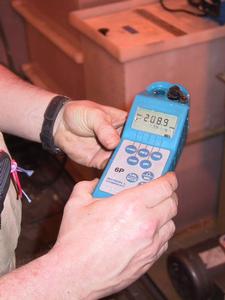
David checks the water quality with this device.
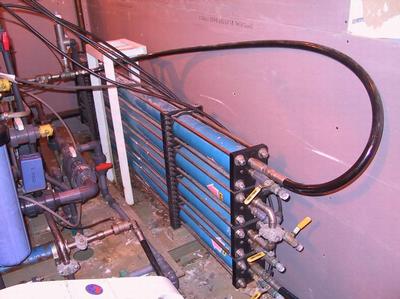
These are the four long tubes where the seawater passes through membranes to become fresh water.
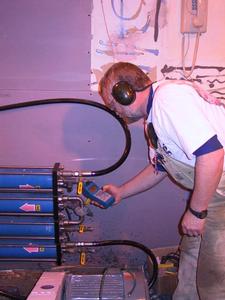
David Ensworth checks the salinity of the water in the reverse osmosis system. He is wearing ear plugs because this system is in the generator room.

This piping includes the water intake, the water outflow, the wastewater outflow, and various electrical systems. The pipes are "heat-wrapped" so that they will not freeze in winter.
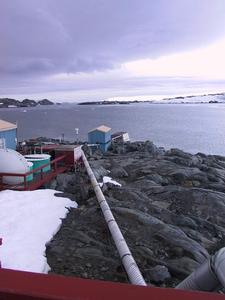
Here you see the long intake pipe from the pumphouse to the generator room, where the reverse osmosis process takes place.
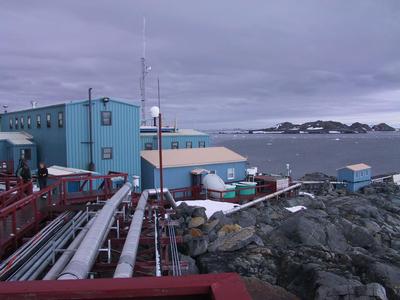
The water pumphouse is the small blue building on the right. The larger building is the BioLab building.
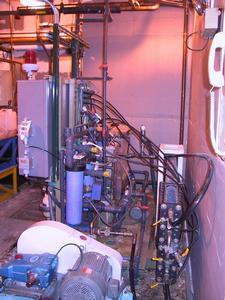
This is the part of the reverse osmosis system.

: Chart 1: As pressure is increased, what happens to water flux (as measured in gallons per foot per day?) As pressure is increased, what happens to the percentage of salt rejection?
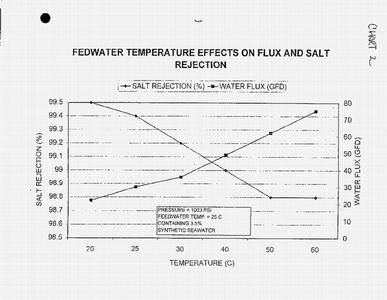
Reverse Osmosis Chart 2 Chart 2: As water temperature increases, what happens to water flux (as measured in gallons per foot per day)? As water temperature increases, what happens to the percentage of salt rejection?

Reverse Osmosis Chart 3 Chart 3: As the salinity (brine concentration) of the feedwater increases, what happens to the water flux (as measured in gallons per foot per day)? As the salinity (brine concentration) of the feedwater increases, what happens to the percentage of salt rejection?
Contact the TEA in the field at
.
If you cannot connect through your browser, copy the
TEA's e-mail address in the "To:" line of
your favorite e-mail package.
|
